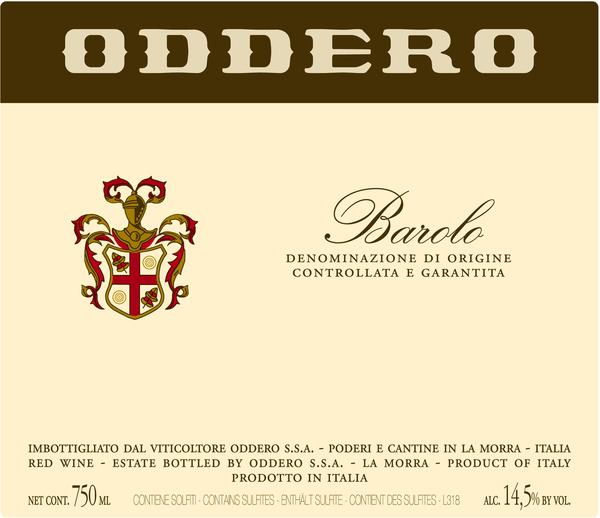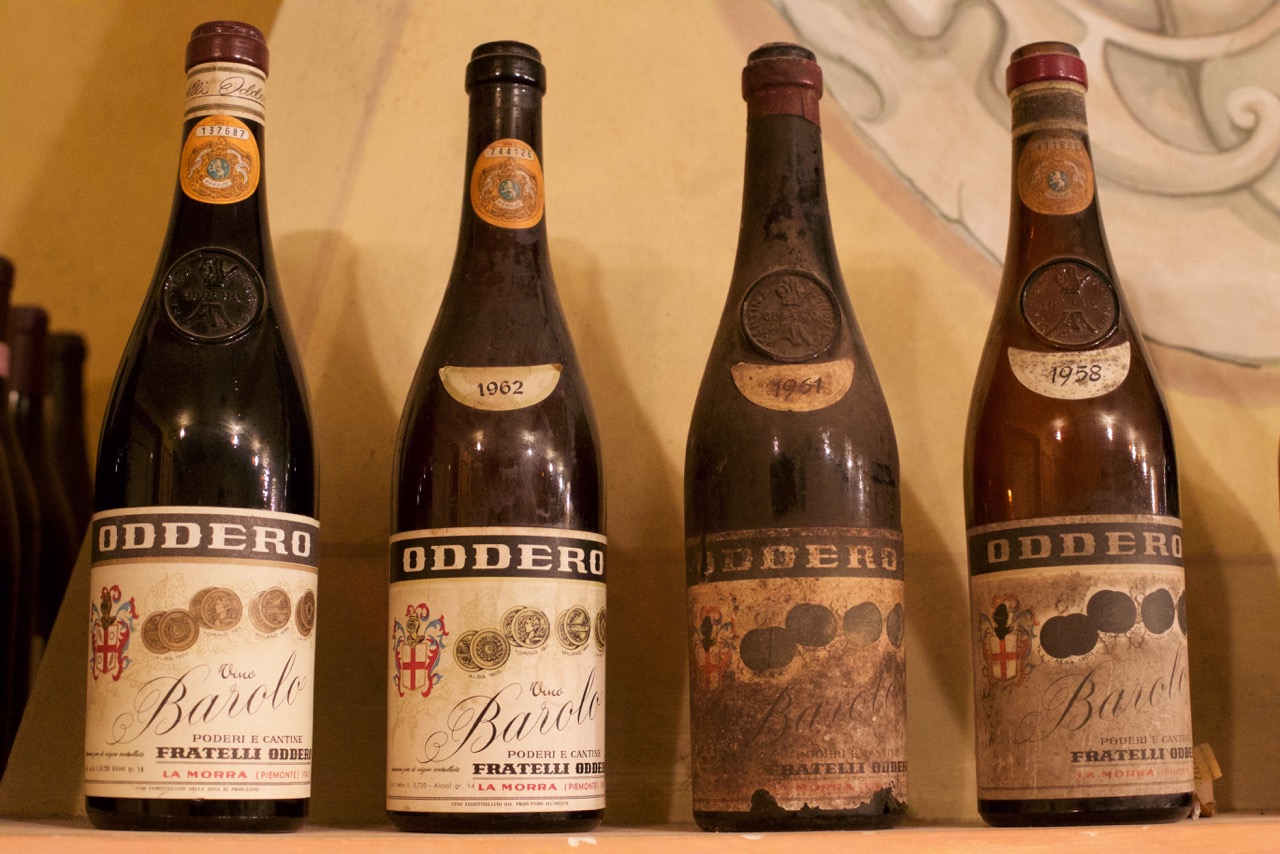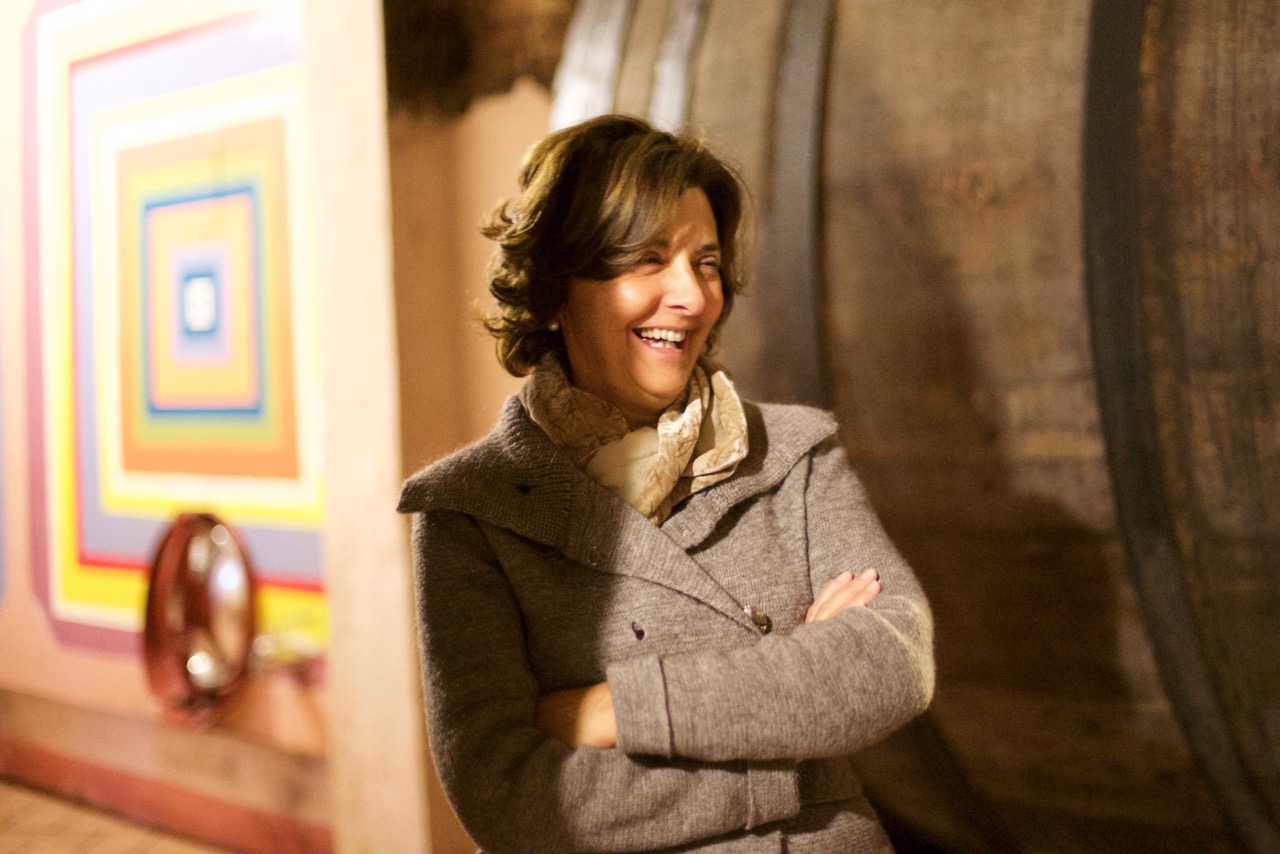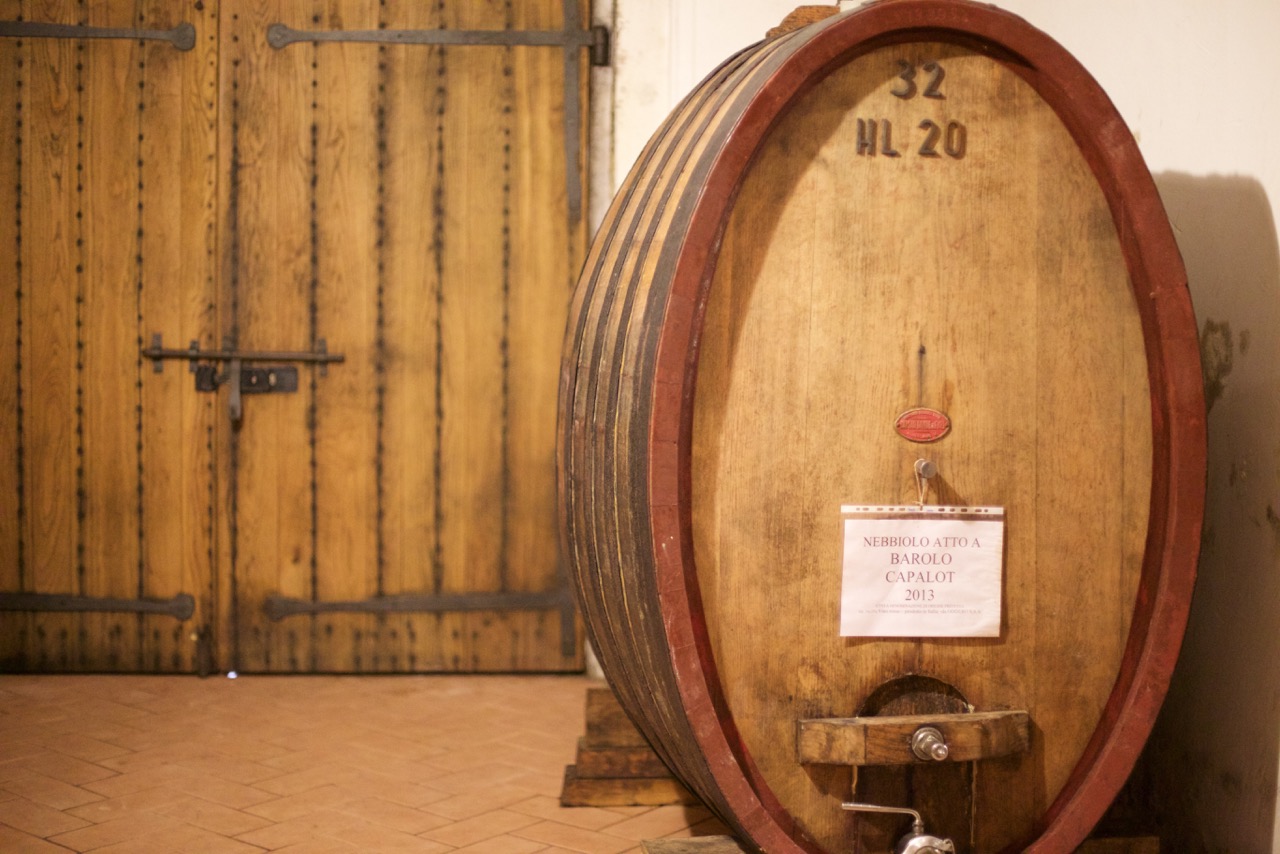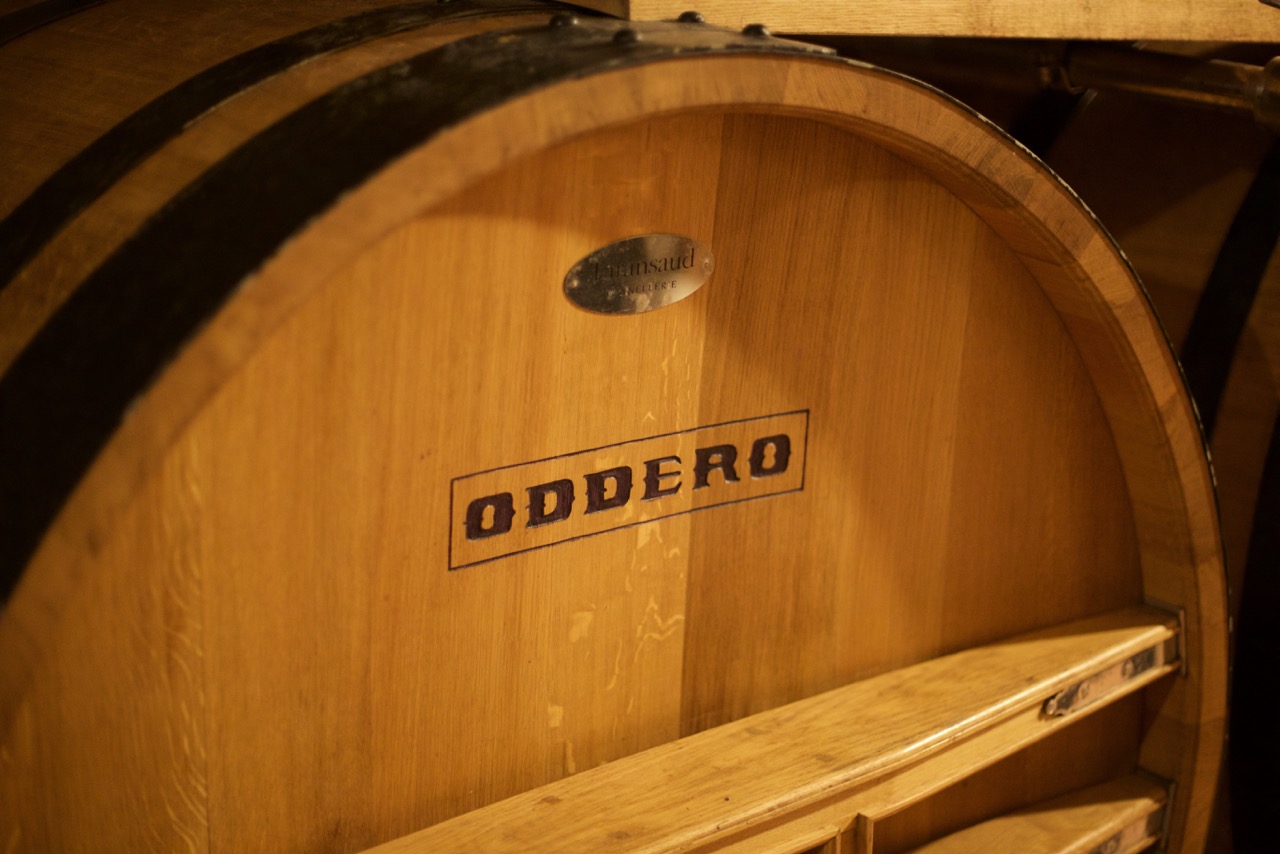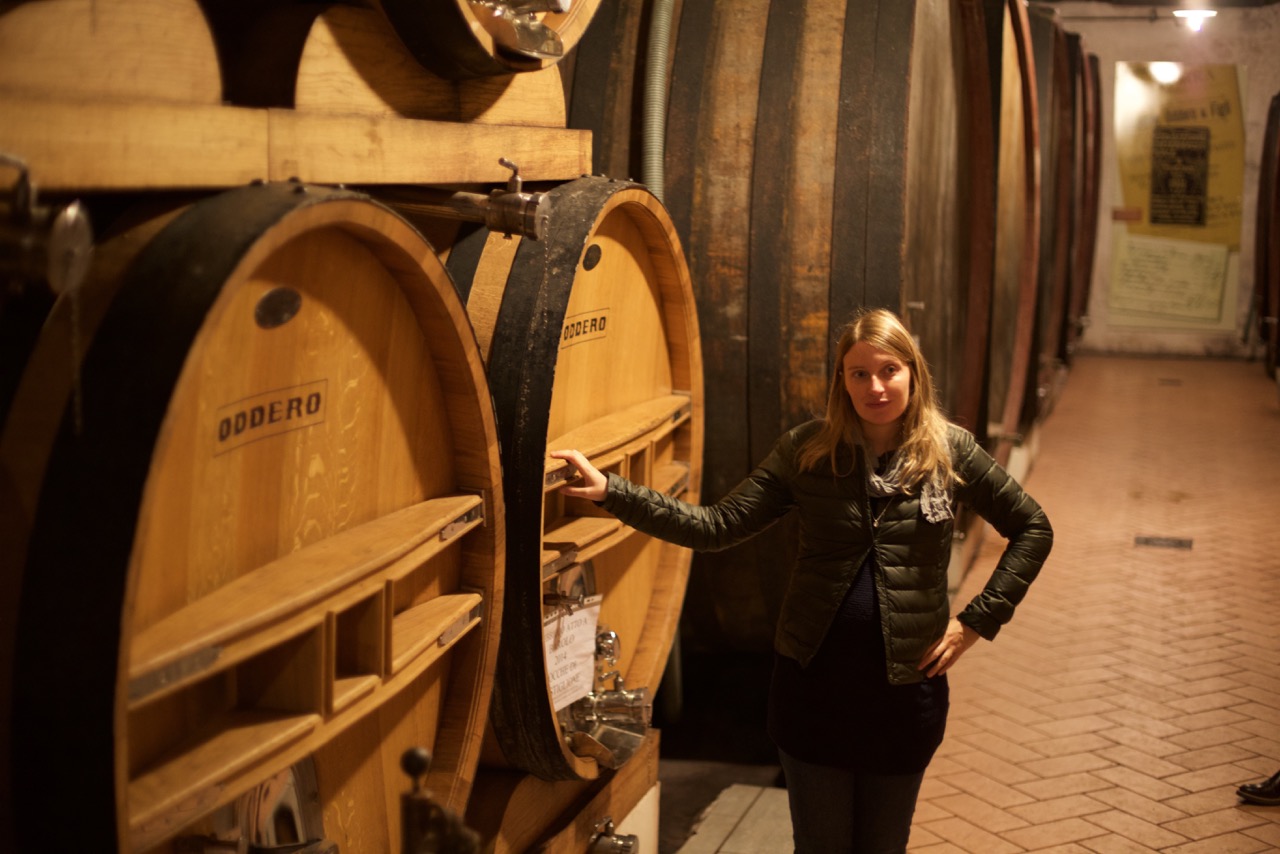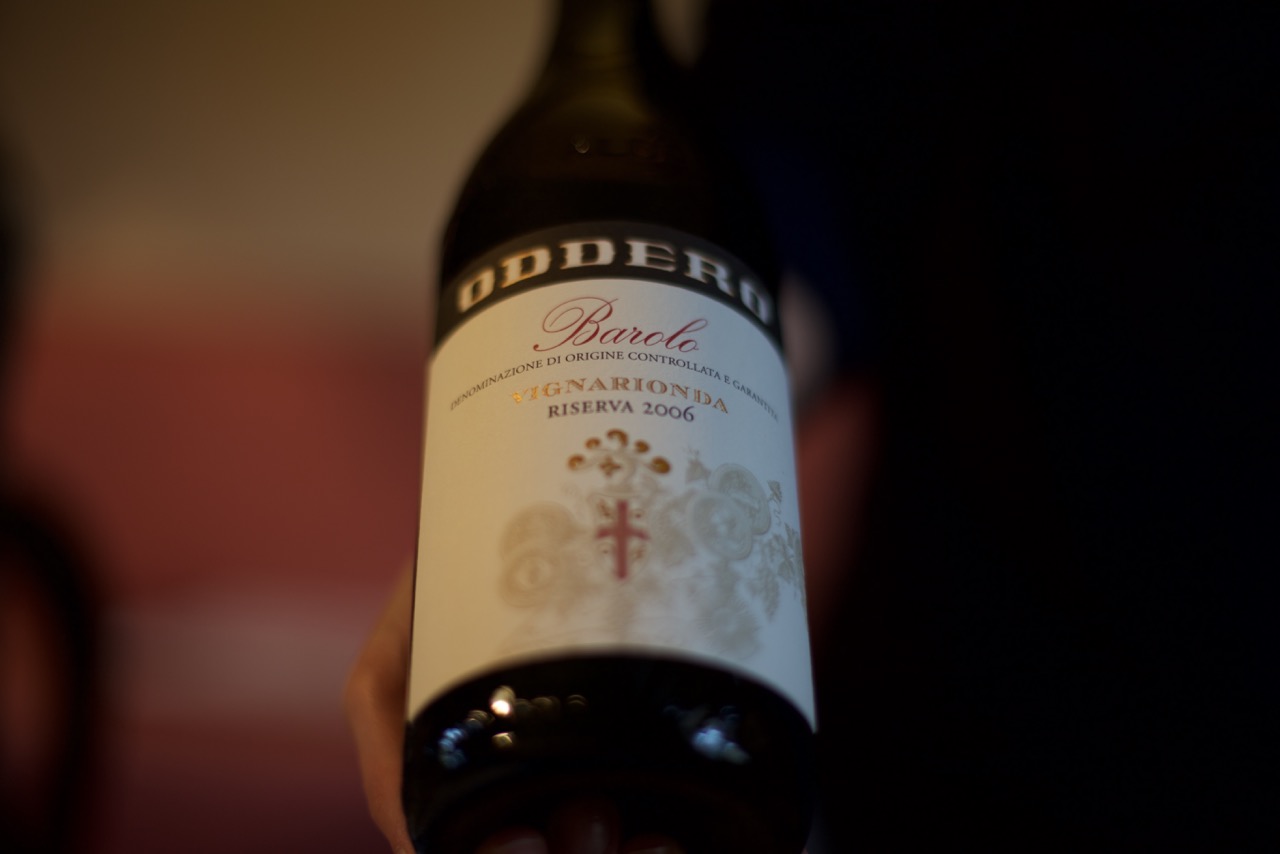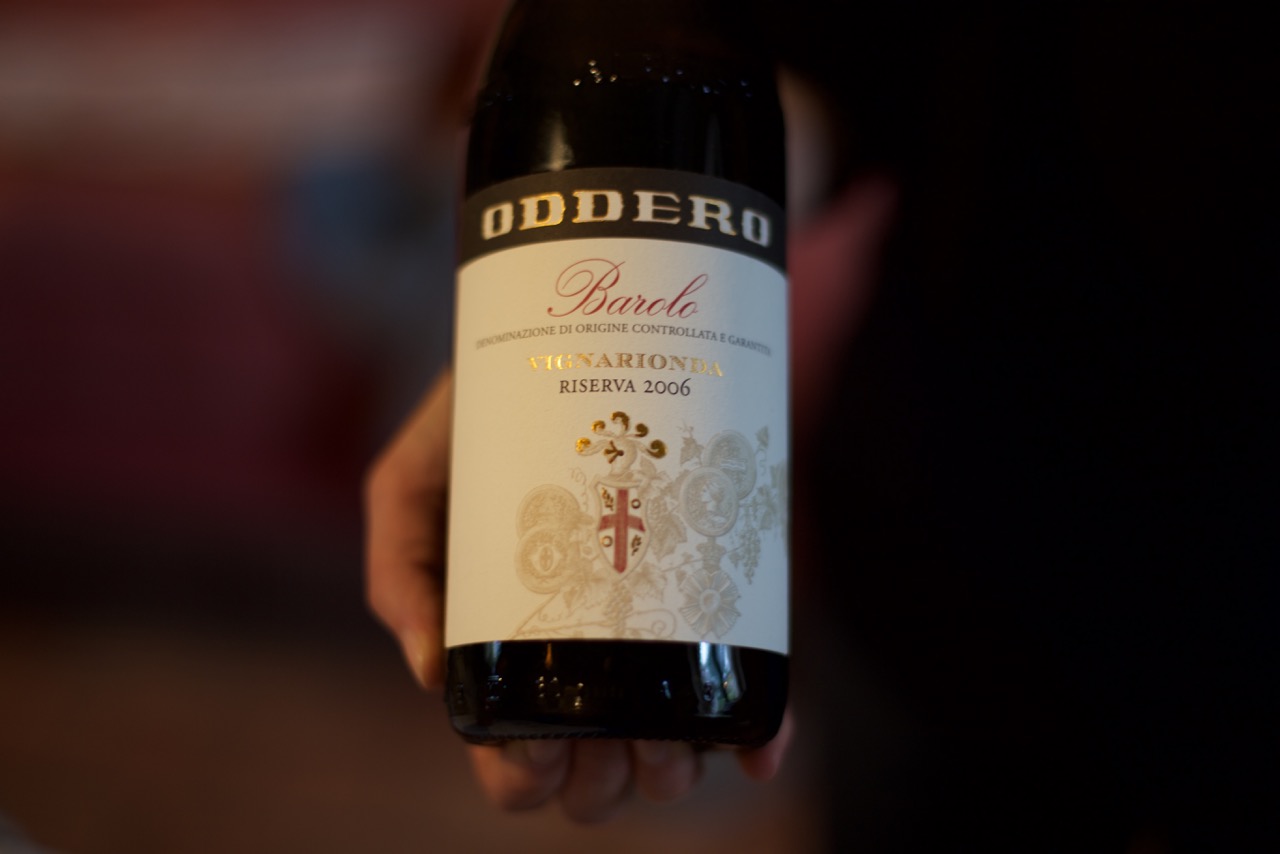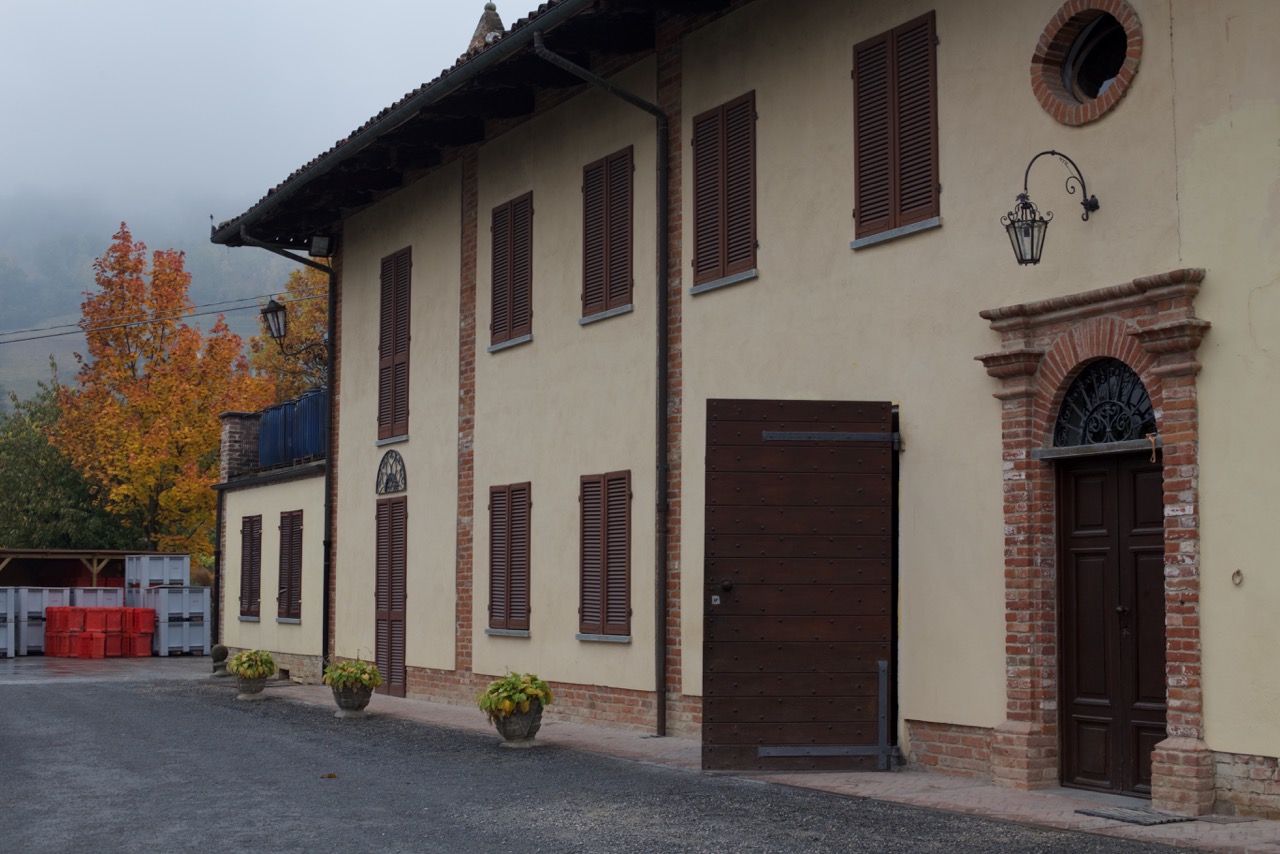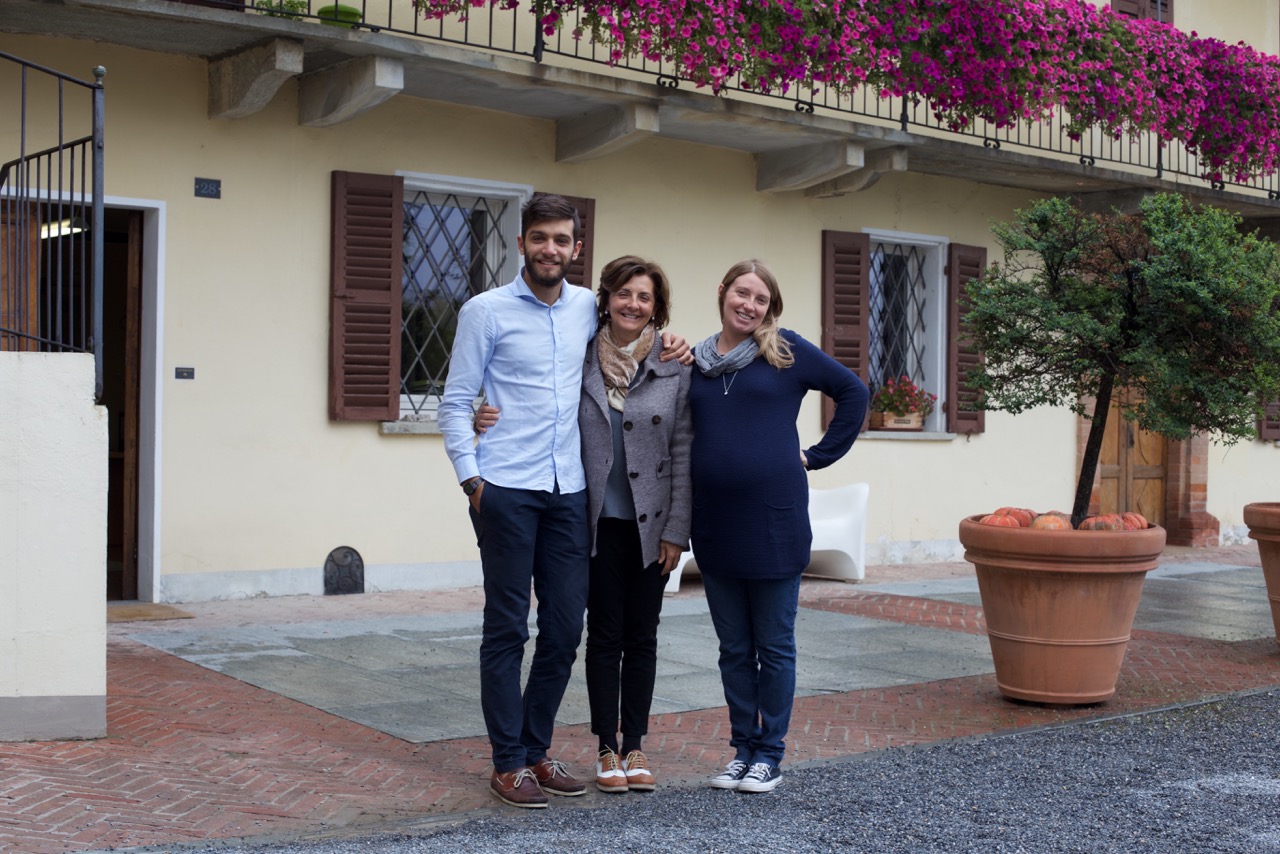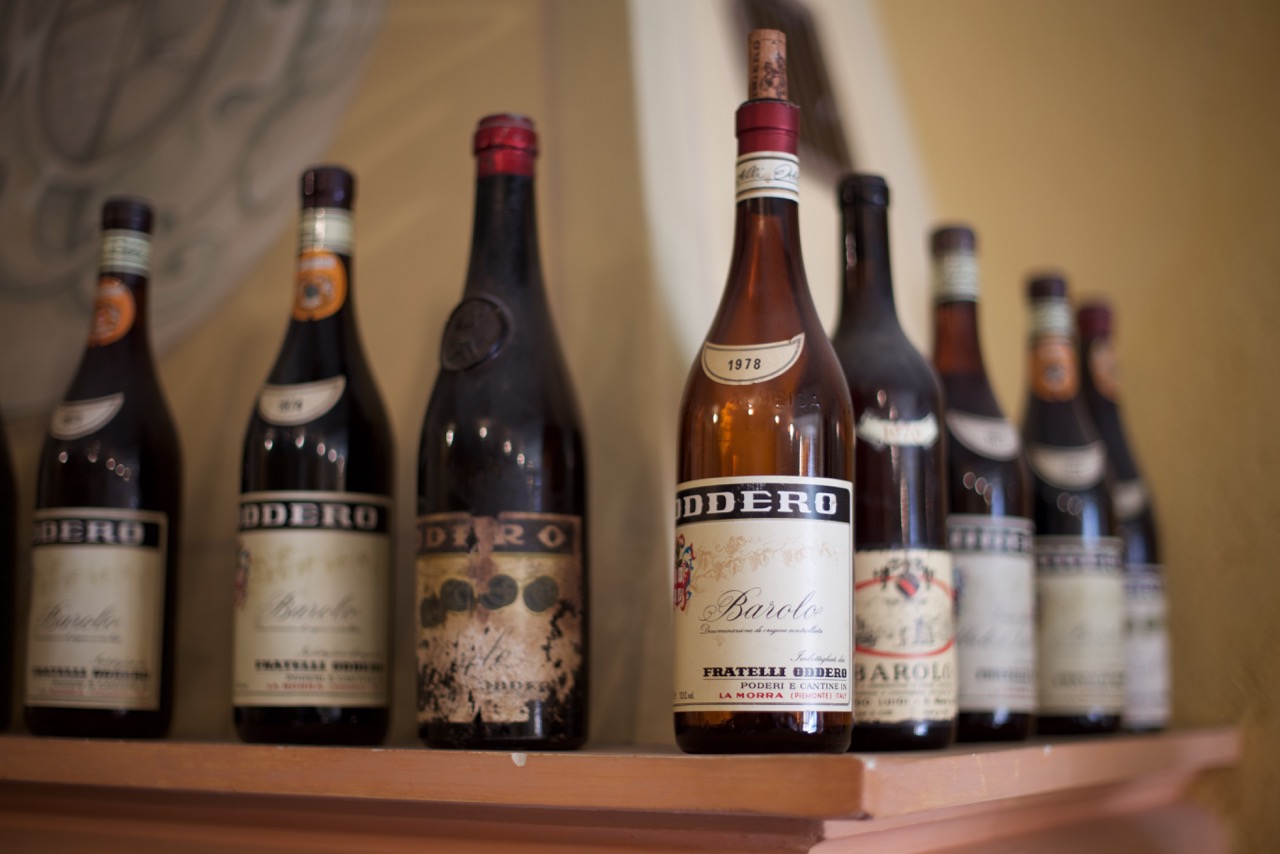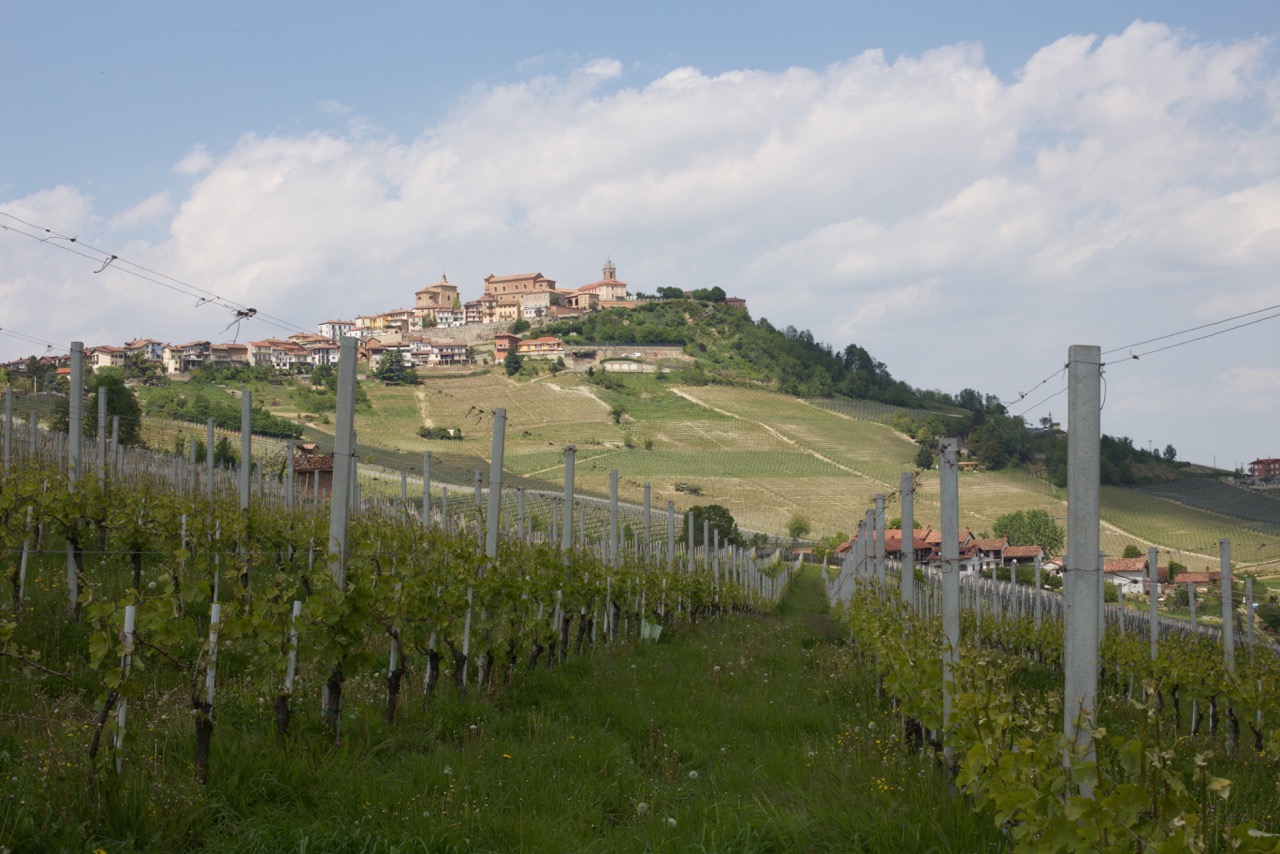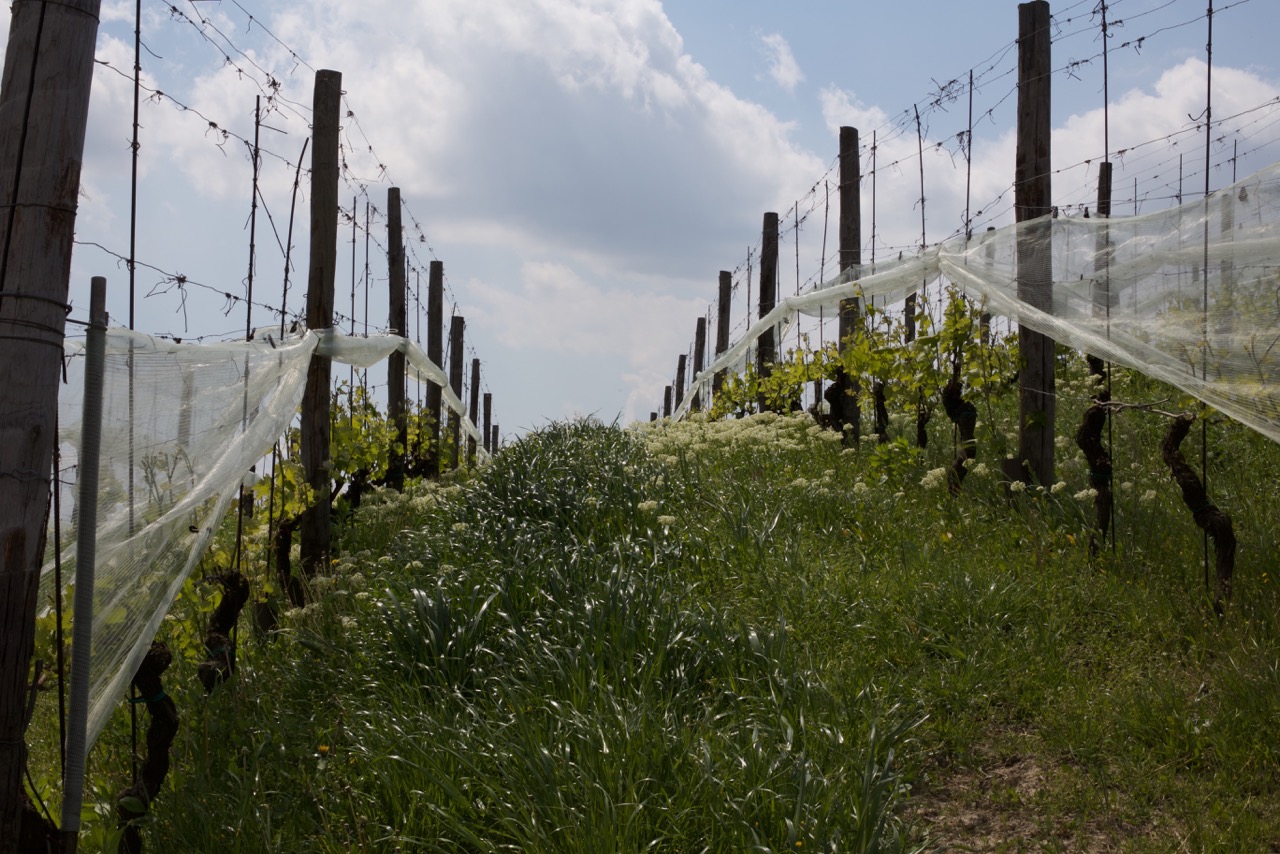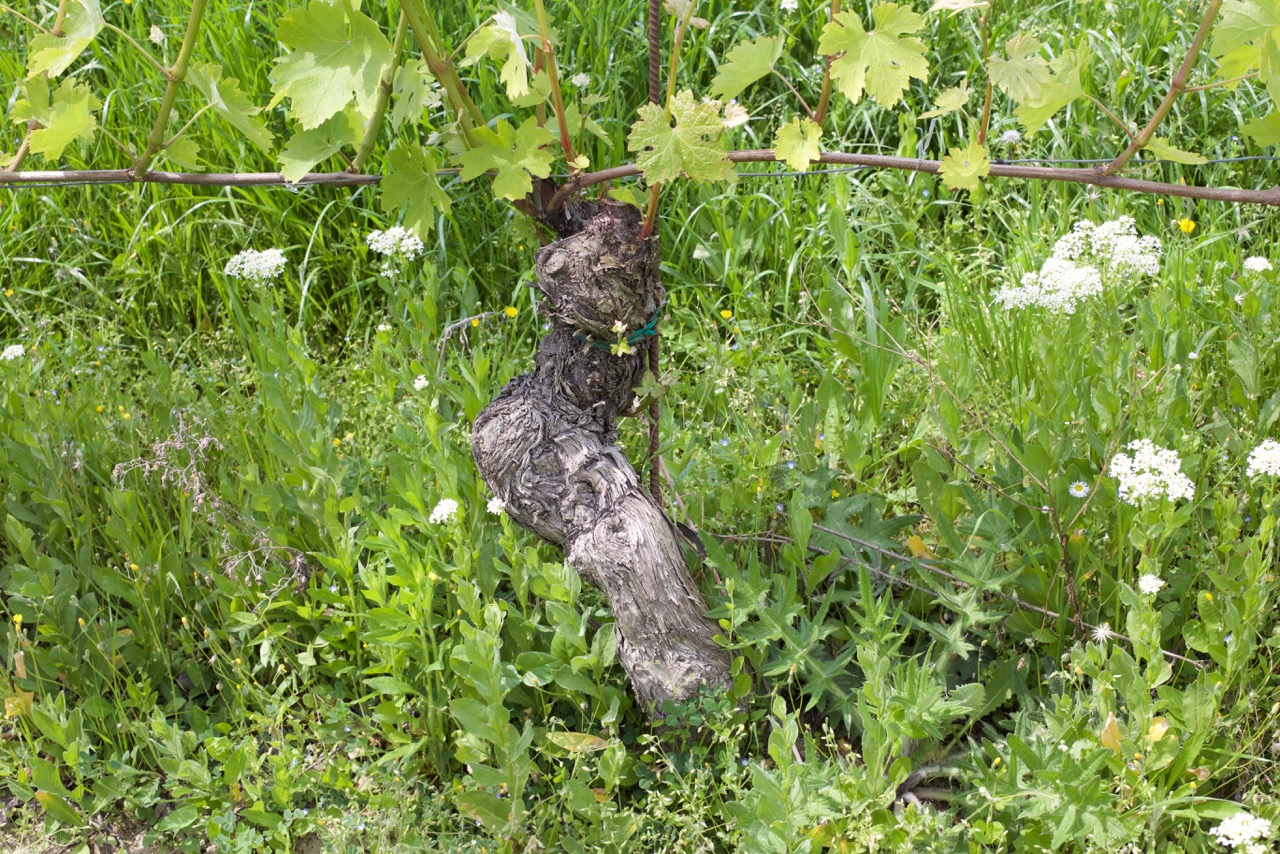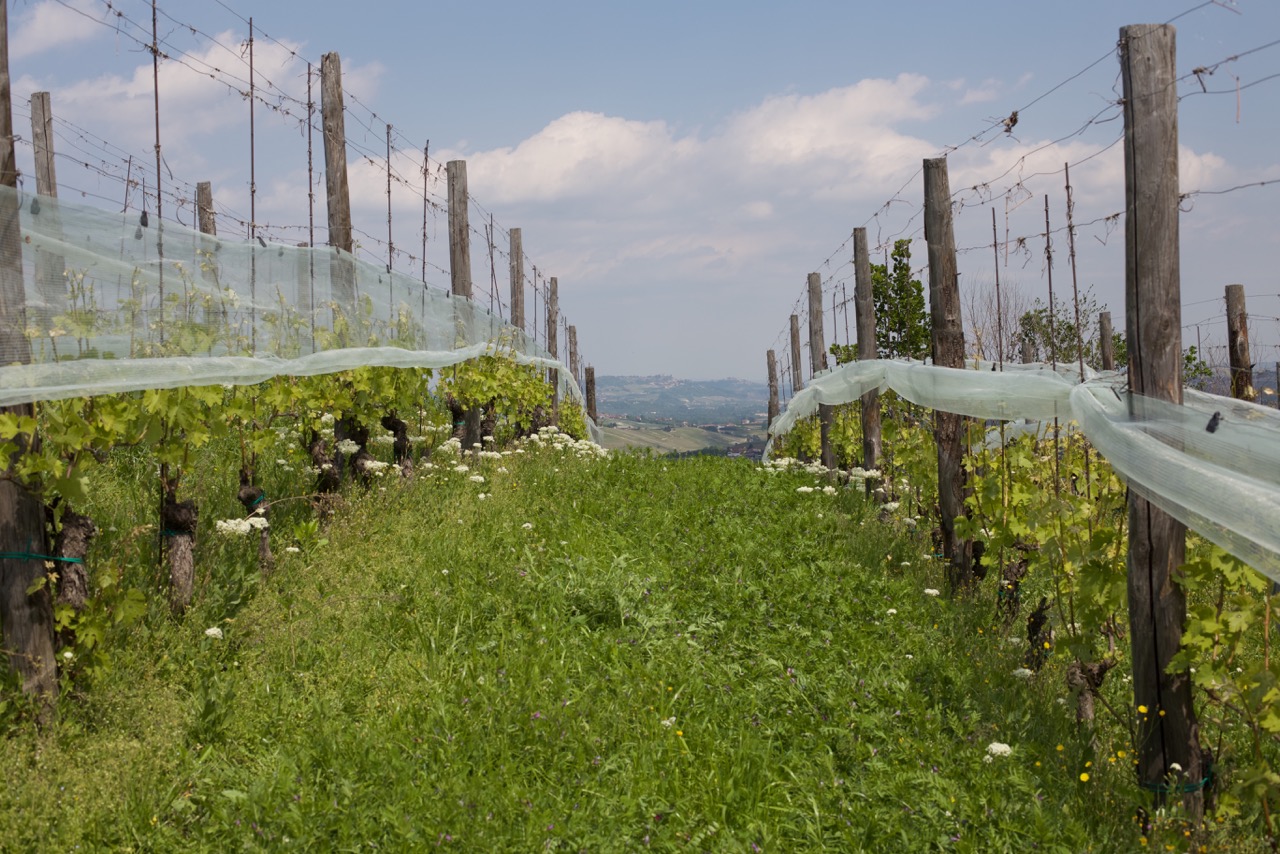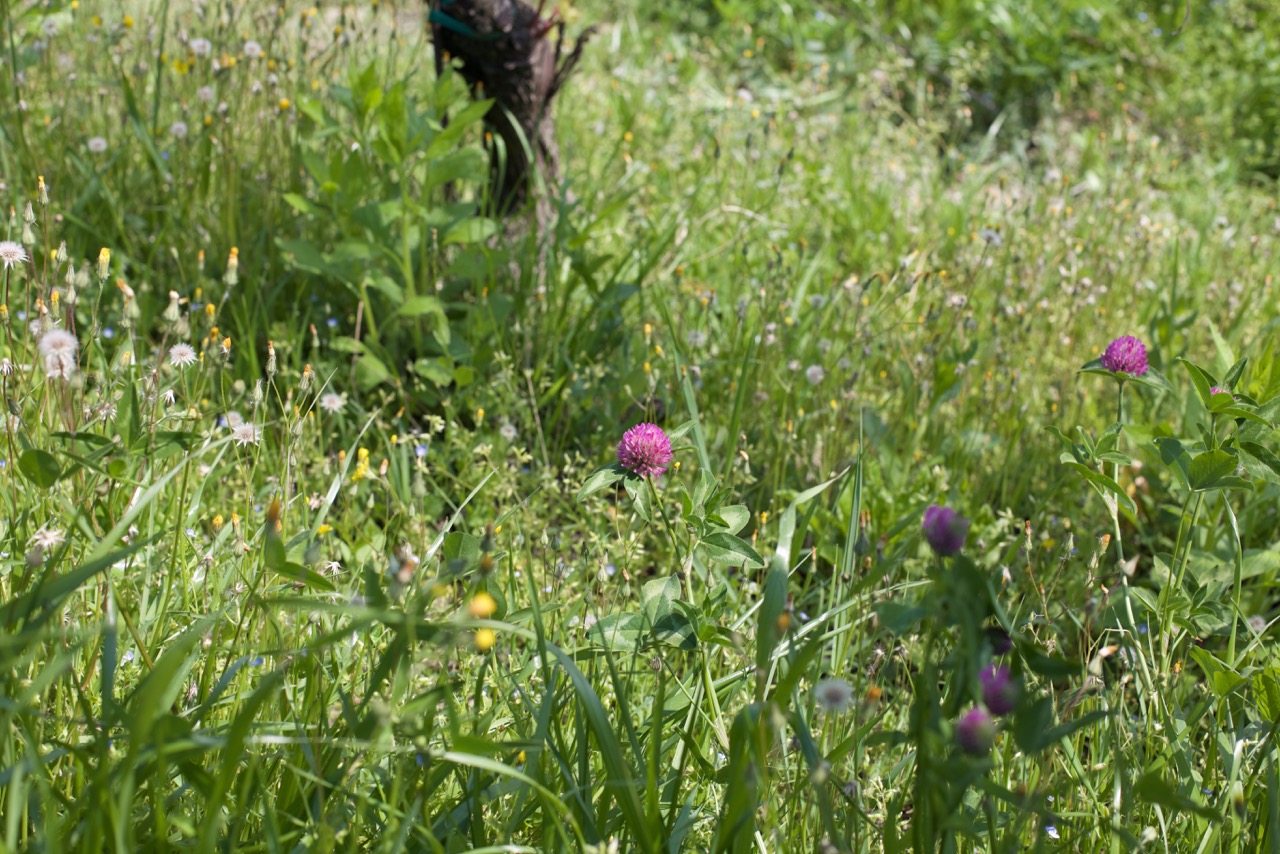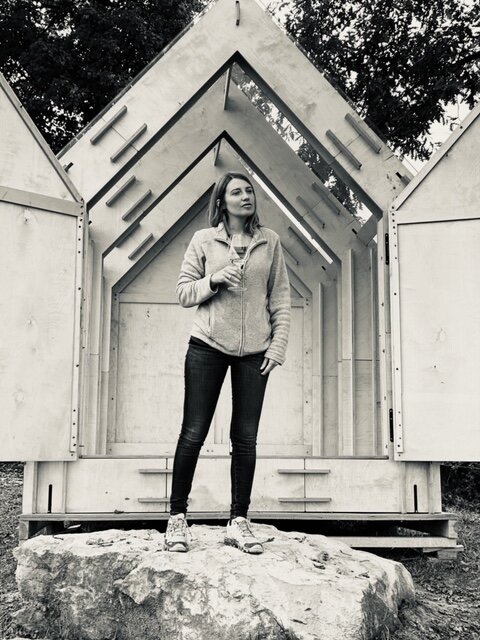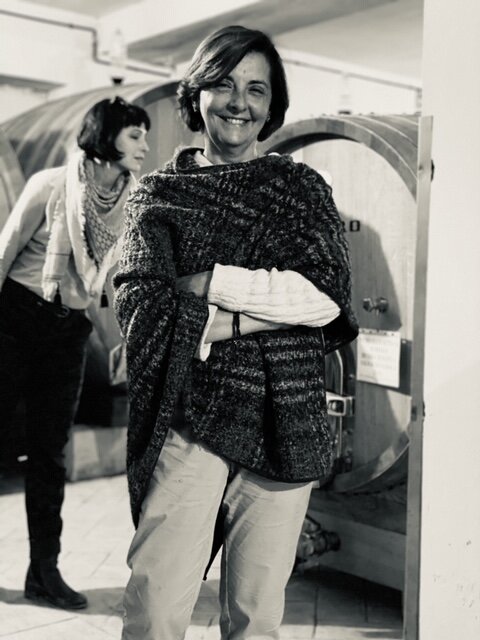Poderi e Cantine Oddero
_____________________________________________
All organic viticulture, certified and labeled
Legendary vineyards throughout Barolo and Barbaresco zones
Historic producer - bottling since 1878
_____________________________________________
About Poderi e Cantine Oddero:
What makes fine wine? Great vineyard sites and great winemaking. Oddero is an amazing Barolo producer because a) they have an extraordinary collection of legendary sites (including Brunate, Bussia, and Vignarionda, and Gallina in Barbaresco), and b) because they use the winemaking style that best allows these sites to express their quality and character, what you might call the ‘clean traditional’ style. This style of winemaking is best because it exalts the flavors in the grapes without adding winemaking flavors (like oak, or spoilage flavors) that get in the way.
The Barolo appellation is divided into ‘crus’, historically accepted sites of varying levels of quality that exist independantly of the producers who own them. In this respect the region is very similar to the Burgundy region, and very different from Bordeaux, for example, or Tuscany, regions where the name of the winery is the important reference. The forebears of the Oddero family that now manage the estate had the foresight to buy up a number of the best single sites in the middle of the 20th century when they were relatively inexpensive, and now Poderi e Cantine Oddero owns a very unusual number of good and great vineyards.
I will only add that the quality and consistency of these wines are benchmarks for fine Barolo. I am drinking and cellaring them, and you should too.
The Wines:
Barolo Classico
In Burgundy terms, this is the Oddero’s ‘village wine’, made from fruit grown in a variety of vineyards within the Barolo area. In the Oddero’s case, blessed as they are by an incredible inheritance of quality sites, these vineyards include Bricco Fiasco, a very well-regarded vineyard in Castiglione Falletto often bottled singly by other producers. The vines are mature, which is an important determining factor of quality; high quality fruit from mature vines, traditional vinification (long maceration and aging in large barrels for 30 months, twice the minimum), gives us textbook Barolo. The combination of vineyards in both of the sides of the appellation gives a wine with medium structure, classic aromas and flavors (wild strawberry, red currants, orange peel, cedar, Ceylon cinnamon, and tealeaves. This of course will age very well for as long as you can resist, certainly up to 15 years and more in great vintages, but I also drink it young, particularly in fresher vintages, with red meats or aged cheeses.
Barolo ‘Villero’
An earlier generation of the Oddero family bought pieces of some very famous vineyards in the Barolo zone, before you had to be a billionaire to do so, including this one, in the commune of Castiglione Falletto. It is close to the Rocche vineyard, just across a road, in fact, but the soil is much richer; tasting the two wines side by side from the same vintage is a fascinating proof of the concept of terroir, of the clear differences sites can provide even when very close together. The vines were planted around 1970; there is a rigorous selection of fruit in the vineyard, and another in the winery, using a moving belt to check each bunch. The grapes are macerated in the fermenting juice for about a month; after malolactic fermentation the wine is aged in large barrels for about 30 months, much longer than the minimum. Castiglione Falletto is exactly in the middle of the Barolo area, on the seam between the two soil types, so it tends to be stylistically in between too, more perfumed and elegant than Serralunga, more structured than La Morra. In Antonio Galloni’s classification of Barolo crus this is rated ‘Outstanding’, equivalent to Premier Cru.
Barolo ‘Rocche di Castiglione’
Rocche di Castiglione is in the commune of Castiglione Falletto. The ‘rocks’ in the name refer to outcroppings of underlying rock nearby; the soil is very meager, leading to problems with drought in dry years, but nonetheless this is an outstanding vineyard, and is rated ‘Exceptional’ by Antonio Galloni (equivalent to Grand Cru in Burgundy). This is across a little road from Villero, but the wines produced are easy to distinguish from each other, proof of the idea of ‘terroir.’ Rocche is more wiry, a little less fruity, rich with botanical aromas like spices, sandalwood, tea leaf, behind which is a bright red-currant fruit note. Ages brilliantly, of course.
Barolo ‘Brunate’
The Brunate cru is in the village of La Morra, not far from the Oddero winery. Brunate is one of the very best vineyards in the Barolo appellation, a ‘Grand Cru’ by any measure. Production is tiny; the wine is of course traditionally made, with about a month of skin contact, and about 30 months of aging in large barrels; any attempt to describe it will prove the truth that great wines are almost impossibly to describe adequately, in fact my definition of a truly great wine is that words fail me. Nonetheless, this is exquisite red wine, with the texture of some rare, fine material, an enormous range of aromas and flavors that includes wild strawberries, Ceylon cinnamon, dried orange peel, and sandalwood, finishing with a flash of mint. Ages brilliantly but I have drunk this young with rib-eye or lamb chops and been bowled over.
Barolo ‘monvigliero’
The Monvigliero vineyard is clearly one of the best in the whole Barolo area, but it’s only been recognized as such in the last few years. (The famous Ratti map of better Barolo vineyards, published in 1979, doesn’t include it.) It is in the village of Verduno, on the very northern edge of the Barolo appellation, north of La Morra; it is south-facing, and the soil is one of the classic Barolo types, Sant’Agata Fossil Marl. The wines made from it are elegant, fine, perfumed, and delicious. The Oddero family are delighted to be able to add Monvigliero to their already extraordinary list of top vineyard sites. The first release is 2020.
Barolo Bussia ‘Vigna Mondoca’ Riserva
Oddero’s Mondoca site is located within the Bussia cru, in the parish of Monforte. It’s exposed to the south-west, and very warm, one of the warmest vineyards in the appellation. The vineyard was planted around 1985. Traditional winemaking, which is to say long maceration (about a month), then long aging (about 36 months) in large barrels. Amazing wine, redolent of all kinds of botanicals, almost like a wine infusion of a host of different plants and fruits; warm and inviting on the palate, tannins are there but they are very attractive, like 70% chocolate. This cries out for aging, and for red meats or aged cheeses.
Barolo ‘Vignarionda’ Riserva
Vignarionda is in the parish of Serralunga, on the east side of the Barolo appellation (the winery is in La Morra, on the west side of the appellation). It is one of the best vineyards in the appellation by any measure; Serralunga is known for meaty, chewy Nebbiolo, and as you’d expect the Oddero family’s bottling of this ‘cru’ is deeply colored (for the variety), more towards the spicy/sous-bois/tealeaf/dark chocolate end of the spectrum than the fruit and flowers end, and one of the best wines for bottle-aging anywhere. It is of course made traditionally, with long macerations with the skins and aging in large barrels for a long time (about 40 months). Outstanding wine.
Barbaresco ‘Gallina’
The Oddero family have an amazing collection of famous vineyards in the Barolo area, and an equally famous example from the sister appellation, Barbaresco: La Gallina. La Gallina (‘the hen’) is near the village of Neive; the Oddero family’s wine made from it is powerful in aroma and flavor, elegant, and very complex. The better the wine, the harder it is to capture in words, but this beautiful Nebbiolo is redolent of wild strawberry, redcurrant, tobacco-leaf, fine leather, and hints of countless other flavors. Ages endlessly but relatively drinkable when young, drink with red meats or aged cheeses.
Langhe Nebbiolo
Nebbiolo is the grape used to make Barolo, and Langhe Nebbiolo is usually from the same vineyards as Barolo but vinified separately and differently, so as to be drinkable on release. If you have fallen in love with the Nebbiolo grape, this is a great way to enjoy it without spending the money for Barolo and without waiting for the wine to age. Characteristic pale red color here belies the concentration of fruit and other flavors: red currants, wild strawberries, cinnamon, tobacco-leaf, and hints of licorice and mint. Drink now with the same kind of food you’d choose for a good Pinot Noir, which is to say red meats, roast chicken, many pasta dishes, or salmon.
Barbera D’Alba
Oddero’s wines can be characterised as carefully grown grapes made into wine skilfully and with restraint, and this light hand is very evident in this Barbera. The fresh raspberryish asperity of the variety is balanced with abundant fruit, the whole thing rounded out by aging in large barrels; a delicious and very versatile table wine. The virtual absence of tannins encourages combination with roast chicken, salmon or tuna, many different pasta dishes, or roast chicken.
Barbera d’Asti Superiore Nizza
Podere Oddero’s vineyards are mostly in the Barolo zone, but they also have a vineyard in the most prized area of the Asti Barbera area, which is now called Nizza (after one of the villages therein). I love Asti Barbera, and this one is outstanding; aged in large barrels, for the rounding effect of wood without the intrusive flavors of small French barrels, the pure and zingy Barbera varietal character comes through vividly. Lovely fresh acidity to counterbalance the ripe raspberry fruit flavors, which makes it one of the best everyday food wines I can think of.
Dolcetto d’Alba
Another textbook example of Langa wine from the Oddero family, this Dolcetto comes from two older vineyards, in La Morra and Castiglione Falletto. Fermentation and aging take place in the usual stainless steel tanks, which give us pure Dolcetto fruit and structure with no winemaking trickery. Deep purplish red color; aroma and flavor of blueberry, black plum, and tealeaves; chewy mid-weight red that complements all kinds of heartier foods. Barolo winemakers drink a lot of Dolcetto, and I do too
_____________________________________________
Other Useful information:
Winemaking: for detailed notes about vineyards, farming practices, winemaking, and the history of the estate I am going to refer you to Oddero’s own website, which is a model of it’s kind: Oddero’s website
